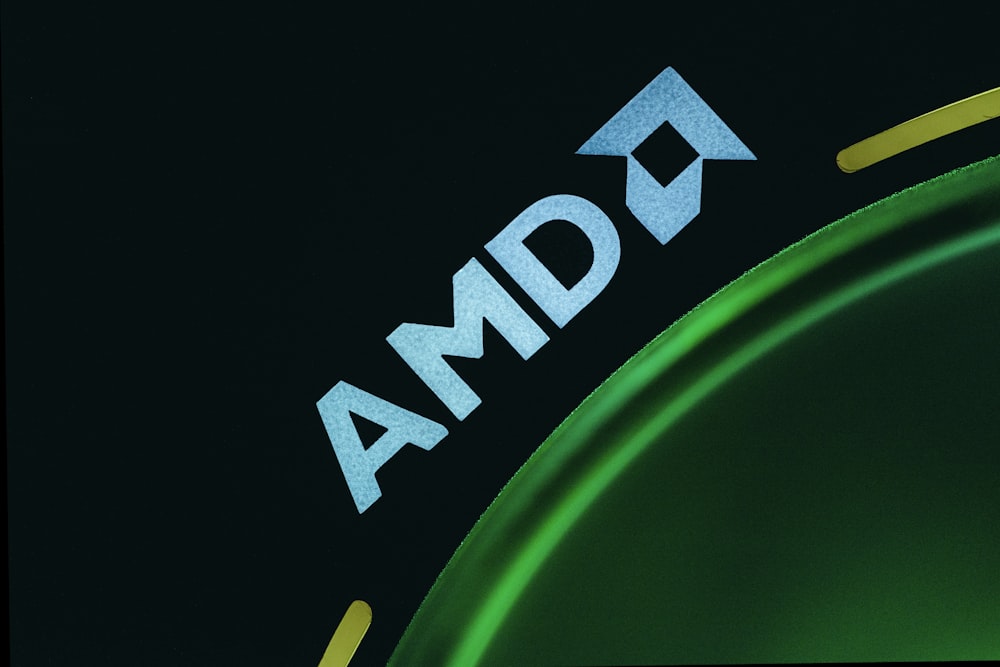Can AMD Catch Up To Nvidia In The Race For AI Chip Dominance?
Image Source: Unsplash
- AMD raised its AI chip revenue forecast to $5 billion, but investors hoped for more.
- Console chip sales fell 69%, reflecting weaker demand.
- AMD shares dropped after the company’s revenue forecast missed estimates.
Advanced Micro Devices Inc. (AMD) saw its shares tumble more than 7% in after-hours trading on Tuesday.
The drop came as the semiconductor giant reported revenue projections that fell slightly short of market expectations, despite an uptick in AI chip sales.
AMD’s fourth-quarter revenue is expected to reach approximately $7.5 billion, just shy of the average analyst estimate of $7.55 billion.
This miss, though relatively modest, raised concerns about the company’s ability to keep pace with the growing AI chip market, currently dominated by Nvidia Corp (NVDA).
AI chip sales grow, but not fast enough for investors
AMD now expects to generate over $5 billion in AI chip sales for 2024, an increase from its earlier forecast of $4.5 billion.
However, the increase did not meet some investors’ hopes for a more substantial leap in the AI hardware sector.
While this growth signals progress, AMD still lags far behind Nvidia, which has captured a significant share of the booming AI accelerator market.
CEO Lisa Su emphasized the company’s progress during a conference call with analysts, stating that AMD is earning trust within the data center space. Su acknowledged that AI customers are giving AMD a fair chance, which could lead to more business in the future.
“Customers are very, very open to AMD,” Su said.
Everyone is giving us a fair shot at earning their business, and that’s what we intend to do.
Competition with Nvidia remains fierce
Nvidia’s dominance continues to cast a shadow over AMD’s efforts in the AI accelerator space. Nvidia generates tens of billions of dollars annually from data-center products, far outpacing AMD’s revenue in the same segment.
Despite AMD’s progress, the company faces hurdles, including supply chain limitations, that constrain its ability to meet growing demand.
AMD’s latest MI300 accelerator chips, designed to compete directly with Nvidia’s products, have become a key growth driver.
However, the rollout has been hampered by limited chip supply from its manufacturing partner, Taiwan Semiconductor Manufacturing Co. (TSMC).
Su acknowledged the supply issues but expressed optimism: “We expect the environment to remain tight, but we’ve planned for significant growth going into 2025.”
AMD’s Q3: Mixed results across segments
AMD reported third-quarter revenue of $6.82 billion, up 18% from a year earlier and slightly above analyst expectations of $6.71 billion. Profit, excluding certain items, rose to 92 cents per share, matching market forecasts.
The company’s data center unit, a key revenue driver, posted sales of $3.5 billion, more than double the previous year’s total.
However, AMD’s gaming console business took a hit, with revenue declining 69% to $462 million, reflecting weaker demand as the current generation of consoles approaches the end of its lifecycle.
Sales of PC chips also showed improvement, rising 29% to $1.88 billion as the company competes with Intel in the personal computer market.
AI infrastructure investments impact the industry
Investors are closely watching AMD as a bellwether for demand in AI-related hardware. Cloud service providers like Amazon Web Services (AWS) and Microsoft Corp. have made significant investments in AI infrastructure.
However, there are growing concerns about whether these AI services can generate enough revenue to sustain high chip costs.
AMD’s stock, which had risen 13% year-to-date, closed at $166.25 before slipping in after-hours trading.
Analysts believe that while AMD is making strides, it remains in catch-up mode compared to Nvidia’s head start in the AI chip sector.
Outlook for 2024 and beyond
AMD’s focus on ramping up production and securing supply-chain improvements reflects its long-term strategy. Su remains confident in the company’s trajectory, stating:
We feel good about our supply-chain capability and expect significant growth moving forward.
Despite the recent stumble, AMD’s ability to deliver consistent revenue growth and make inroads into the AI chip market will determine its future competitiveness.
More By This Author:
Pinterest Stock Price Deep Dive: Buy Or Sell Ahead Of Earnings?HSBC’s $3b Share Buyback: What It Means For Investors After Q3 Earnings Beat
Analysis: Why Oil Prices Are Likely To Stay Low After Israel’s Limited Strike
Disclosure: Invezz is a place where people can find reliable, unbiased information about finance, trading, and investing – but we do not offer financial advice and users should always ...
more



